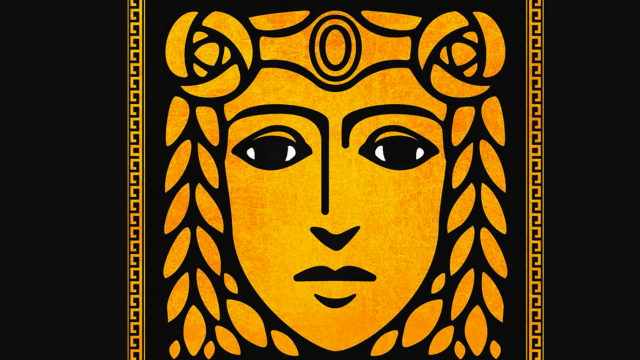In much of our modern supernatural genre media where heroes and villains wage war for reality, you can plainly see the long-lasting influence of myths about gods and monsters incessantly vying for dominance over one another. DC’s Lucifer, Marvel’s Loki and Thor, and Sersi of the Eternals are just a handful of the fictional comics characters crafted from the mythologies of religious figures. For any MCU fan looking to brush up, we highly recommend checking out Madeline Miller’s Circe.
As was the case with Loki and Thor, the mythological Circe’s name is likely to become somewhat more well-known following Marvel’s upcoming Eternals film. Angelina Jolie is set to play Sersi, an Eternal whose canonical history is based on the Circean myths. Miller’s Circe follows the many arcs of the eponymous Greek goddess’ life as she goes from being an obedient, modest sea nymph to becoming one of the world’s first and most formidable sorceresses.
Though Circe’s been most famously associated with the role she plays in Homer’s Odyssey, Miller’s book first introduces you to the goddess at a much earlier point in her life — long before she’d ever encountered humans. Like all of the Titan Helios’ children, Circe is born with a certain degree of innate divinity that makes her markedly more graceful and long-lived than any mortal. However, compared to her sister Pasiphaë, her brother Perse, and the rest of the Titans in Helios’ court, Circe’s considered unremarkable due to her lack of apparent powers or beauty.
In most stories, the character is depicted as a prototypical witch with a particular knack for transmutation. But before Circe gets around to showing you how she eventually ends up transforming Odysseus’ men into pigs, the book lays out how her propensity for thinking and asking dangerous questions were the first steps toward coming into her greatness. Circe details how, in the familial power structure established after the Titans and Olympians’ first war, nymphs like Circe and her siblings ranked so low that their existences were of little concern to the other gods.
But as inconsequential as nymphs might be on their own, they all possess the kind of beauty and love for godhood that often leads to them shacking up with greater divinities. All of them, of course, except Circe, whose peers never miss an opportunity to tell her how repugnant they think she is. The cruelties she suffers from her siblings, her mother Perse, and her innumerable extended family members do bother young Circe as she spends her ageless life absorbing information and waiting for something to shift about her situation. It isn’t until Circe’s youngest brother, Aeëtes, is born that she first begins to find the strength to become her own agent of change.
Miller’s book very cannily acknowledges how, in most poetic tellings, the exact mechanics of how gods’ powers work are left to the imagination and that many believe the gods can do anything. Unlike the divine power of the Titans and Olympians, the command over pharmaka — specific plants imbued with power — that Circe discovers she has is a skill that requires both a natural gift and a taste for specificity. She first begins dabbling in magic by gathering and experimenting with some of the rare flowers that only grow where the blood of Titans has soaked the earth.
As Circe begins to fall in love with a mortal man named Glaucus, her desire to make him happy leads to the first major show of power: she uses the magic flowers to transform him into a full-on god who the other Titans immediately accept. The nature of Circe’s relationship with Glaucus is one of the first of many significant deviations Circe makes from the larger mythic canon in which she’s been featured over the centuries. Where most stories about Circe frame her as a manipulative seductress who bends men to her will, Circe opts for a telling where her interactions with men like Glaucus, Odysseus, and Daedalus are more nuanced and reflective of everyone’s complexities.
Through its retelling of Circe’s origins and how her life intersects with those classic Greek heroes, Miller’s Circe turns her into a much more sympathetic figure than her traditional counterparts. But in its deconstruction and reframing of her character, it also emphasises elements of her story that have come to define the way that we think about witches in pop culture. Even though it’s meant to be a punishment, Circe’s eternal, solitary exile to the island of Aiaia gives her one of her first true tastes of freedom away from the world and its cruelties.
Circe makes you understand how, from the perspective of a witch like Circe, a dense forest packed with unknown and dangerous flora and fauna is a place of safety and strength that unsuspecting mortals would do well to avoid.
Miller’s characterization highlights the thematic parallels between the greek goddesses’ actions in classic myths and the sorceresses seen in contemporary stories like Marvel’s WandaVision. Circe’s antagonistic relationship with her sister Pasiphae persists throughout most of the book, and it plays an important role in preparing Circe for her life as a renowned — if infamous — magic-user whose actions terrify the gods. As easy as reshaping matter to her will comes to Circe, she struggles with the “normal” things expected of her as a daughter of Helios because she doesn’t fit into a traditional mould. Nothing about the romances Circe experiences, her battles, or her path to motherhood mesh with her fellow goddesses’ ideas about what kind of life she should be leading.
No one story can capture Circe as a figure in her entirety, as she’s gone on to embody many different kinds of ideas, and becomes a much more dynamic and vibrant character the more you delve into her lore. But in this specific moment where reality-warping witches and immortal sorceresses have become the heroes of the story, Circe’s a figure worth considering, and Miller’s Circe’s an excellent place to start.
